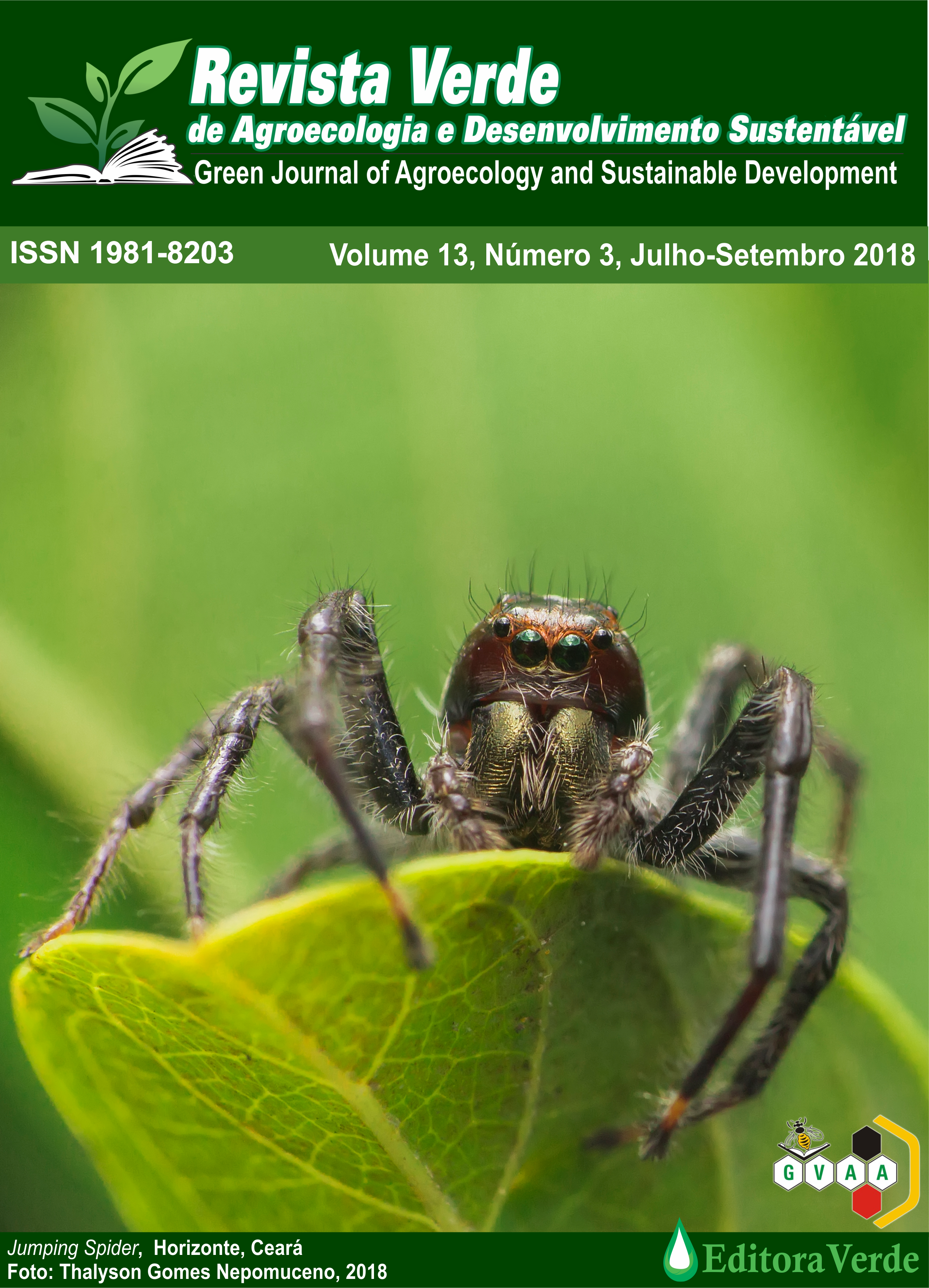Environmental sustainability of the water footprint in the Alto Piranhas sub-basin in the sertão paraibano, Brazil
DOI:
https://doi.org/10.18378/rvads.v13i3.5999Keywords:
Water resources, Brazilian semi-arid, Water use.Abstract
Advances in water management require knowledge of the availability and demand of water resources, as a subsidy to define priority actions that can conserve the proper use of water. The main objective of this article is to determine the water footprint in the Alto Piranhas sub-basin, located in the Sertão Paraíba, in 2015, and analyze its sustainability through operational scenarios. Based on this, studies were carried out with the water footprint methods in order to verify their efficiency and effectiveness in generating information on the amount of water consumed in the main water use sectors, as well as to analyze the sustainability of the studied sub-basin . The research is classified as exploratory and descriptive, since it involves bibliographic research, case study, data collection and also establish relations between variables so that it can reach the final result. The results of the research showed that the sub-basin is sustainable for the year of 2015, even though we have a very dry year and inefficient practices. However, when analyzed in the period from July to December the sub-basin presented high rates of scarcity and pollution, due to the reduction of natural flows. Therefore, the studies in the High Piranhas subbasin will subsidize the public manager in a precise decision-making and consequently promote the strengthening of the water resources management system that seeks sustainable governance.Downloads
References
AESA, AGÊNCIA EXECUTIVA DE GESTÃO DAS ÁGUAS DO ESTADO DA PARAÍBA. Plano Estadual de Recursos Hídricos da Bacia Hidrográfica do Rio Piancó-Piranhas-Açu. Resumo Estendido. AGÊNCIA NACIONAL DE ÁGUAS (ANA). Brasília-DF, 2016.
ANA, AGÊNCIA NACIONAL DE ÁGUAS. Plano de recursos hídricos da bacia hidrográfica do rio Piancó-Piranhas-Açu / Agência Nacional de Águas. -- Brasília: ANA, 2016.
ALBUQUERQUE, M. F.; Medições e Modelagem da Pegada Hídrica da Cana-DeAçúcar Cultivada no Brasil; Dissertação apresentada ao programa de Pós-graduação em Meteorologia da Universidade Federal de Campina Grande (UFCG); Campina Grande-PB, 2013.
ALLAN, J. A. Virtual water: A strategic resource global solutions to regional deficits. Ground Water, v.36, p.545-546, (1998).
CAGEPA, COMPANHIA DE ÁGUA E ESGOTOS DA PARAÍBA. Consumo médio per capita e perdas da rede de abastecimento. Registros In loco, 2016.
EMATER, EMPRESA DE ASSISTÊNCIA TÉCNICA E EXTENSÃO RURAL. Consumo médio de água e alimentos por categoria animal. Registros In loco, 2016.
EMBRAPA, EMPRESA BRASILEIRA DE PESQUISA AGROPECUÁRIA. Consumo médio de água e alimentos por categoria animal. Registros In loco, 2016.
EMPINOTTI, V. L.; JACOBI, P. R.; Novas práticas de governança da água? O uso da pegada hídrica e a transformação das relações entre o setor privado, organizações ambientais e agências internacionais de desenvolvimento; Revista Desenvolvimento e Meio Ambiente, v. 27, p. 23-36, 2013.
HOEKSTRA, A. Y; CHAPAGAIN, A. K.; The blue, green and grey water footprint of rice from production and consumption perspectives. Ecological Economics, v.70, p 749-758, 2011.
HOEKSTRA, A. Y.; CHAPAGAIN, A. K.; ALDAYA, M. M.; MEKONNEN; M. M. Manual de Avaliação da Pegada Hídrica: estabelecendo o Padrão Global; Traduação para português. 2011.
IBGE, INSTITUTO BRASILEIRO DE GEOGRAFIA E ESTATÍSTICA. Censo Demográfico de 2010. Disponível em: https://ww2.ibge.gov.br/home/estatistica/populacao/censo2010/
LEÃO, R. de S.; Pegada Hídrica: Visões e Reflexões Sobre sua Aplicação; Revista Ambiente & Sociedade n São Paulo v. XVI, n. 4 p. 159-162, 2013.
LIMA, A. J. R.; Governança dos recursos hídricos: proposta de indicador para acompanhar sua implementação. São Paulo: WWF - Brasil: FGV, 2014.
MARACAJÁ, K. F. B.; ARAÚJO, L. E.; SILVA, V. de P. R.; Regionalização da Pegada hídrica no Estado da Paraíba. Revista de Administração, Contabilidade e Sustentabilidade. Vol.4, nº 1, p. 105-122, 2014.
PAB, Programa Água Brasil; Pegada Hídrica de Bacias Hidrográficas; Inciativa da Agência nacional de Águas, Fundação Banco do Brasil e WWF-Brasil, 2014.
SNIS, SISTEMA NACIONAL DE INFORMAÇÕES SOBRE SANEAMENTO. Diagnóstico dos Serviços de Água e Esgotos – 2014. Brasília: SNSA/MCIDADES, 2016.
SOUZA, A. C. M.; SILVA, M. R. F. da; DIAS, N. da S. Gestão de recursos hídricos: o caso da bacia hidrográfica Apodi/Mossoró (RN). Irriga, Botucatu, Edição Especial, p. 280 - 296, 2012.
SUDENE, SUPERINTENDÊNCIA DO DESENVOLVIMENTO DO NORDESTE. Dados Pluviométricos Mensais do Nordeste – Série Pluviometria 5. Estado da Paraíba. Recife, 239p. 1990.











